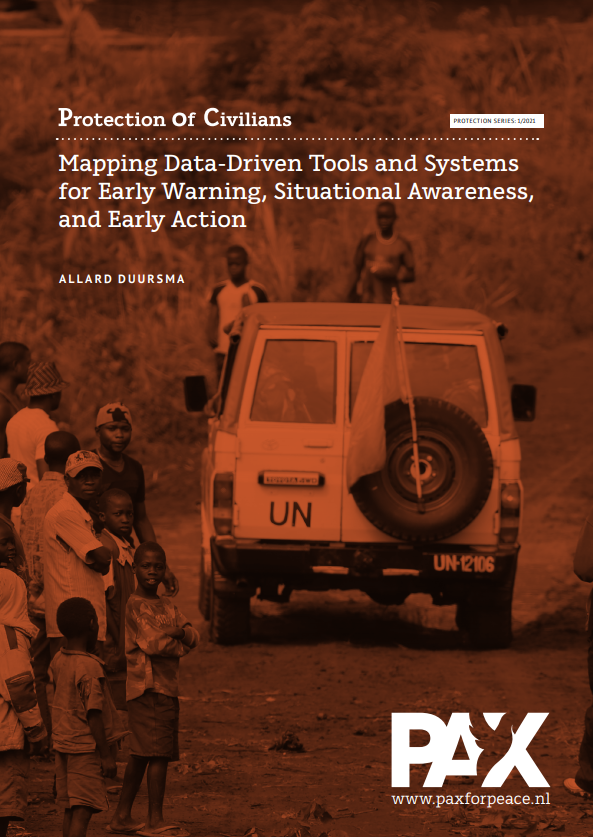Mapping Data-Driven Tools and Systems for Early Warning, Situational Awareness, and Early Action
In this report, PAX looks at how the UN, NATO, and African Union collect, analyze, and apply data for early warning and early action to improve the lives of the populations they are mandated to protect.
Protection of civilians is mandated in most UN peace operations and has a prominent role in the work of security actors worldwide; but a mandate to protect is not enough. Those implementing civilian protection need granular data and improved situational awareness to help apply positive protection protocols proactively.
The first section of this report provides a summary of the key findings of the report and summarizes several recommendations on how to enhance early warning for POC. The next section discusses the early warning tools for POC within the UN. This part also discusses sections and units of UN peace operations that are tasked with identifying threats to civilians. The section on the UN is by far the most extensive one of this report, which is simply a result of the UN’s turn to POC in 1999. The UN seems to engage more in POC-related activities than any other security actor. Yet, in order to make the report as comprehensive as possible, the early warning tools used by the AU and NATO are discussed in the third and fourth sections respectively. The fifth and last section identifies summaries and lessons learnt. The last section also identifies gaps concerning POC-related early warning tools on the basis of which several recommendations are put forward.
About this report
Date of publication:
Apr 13, 2021
Author:
Allard Duursma
Publisher:
PAX Protection of Civilians
Topic
Data for Protection
Mapping Data-Driven Tools and Systems for Early Warning, Situational Awareness, and Early Action
Apr 13, 2021, Allard Duursma


